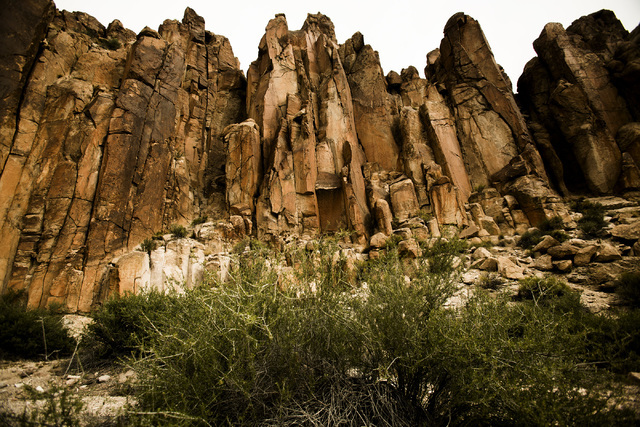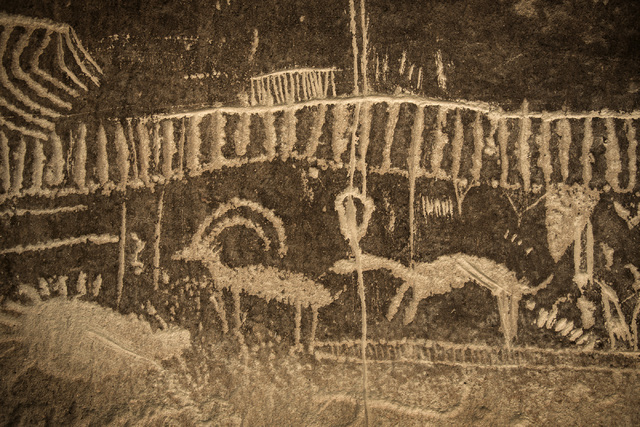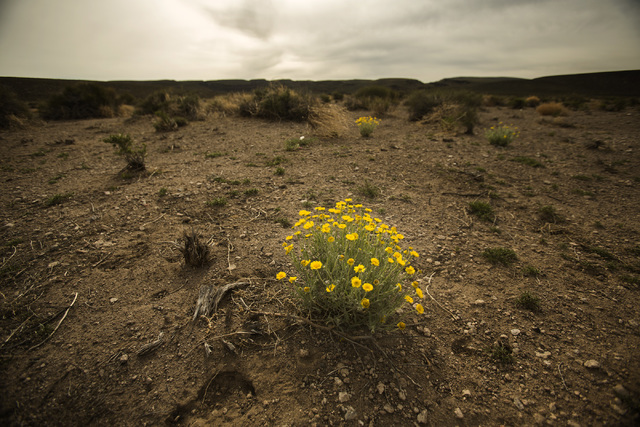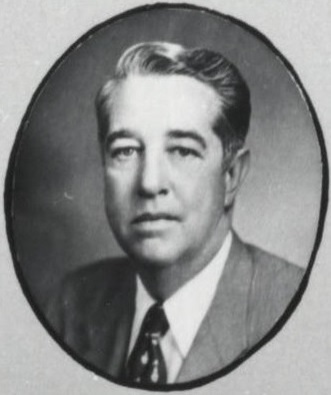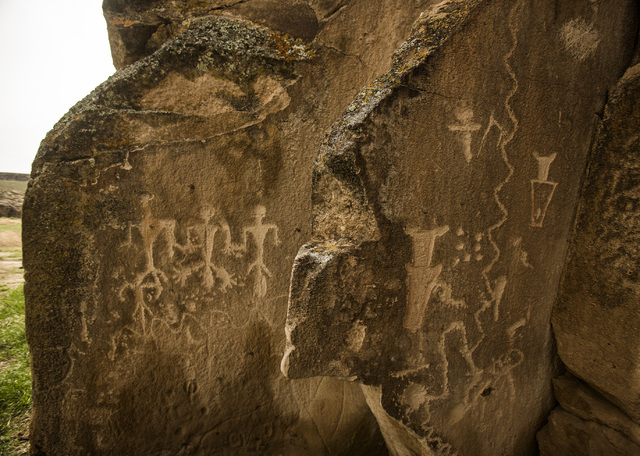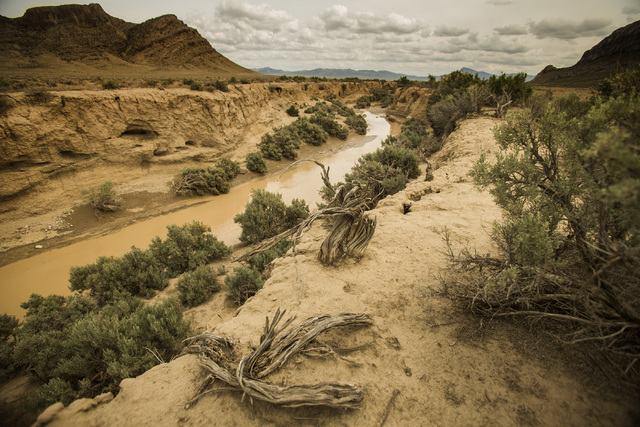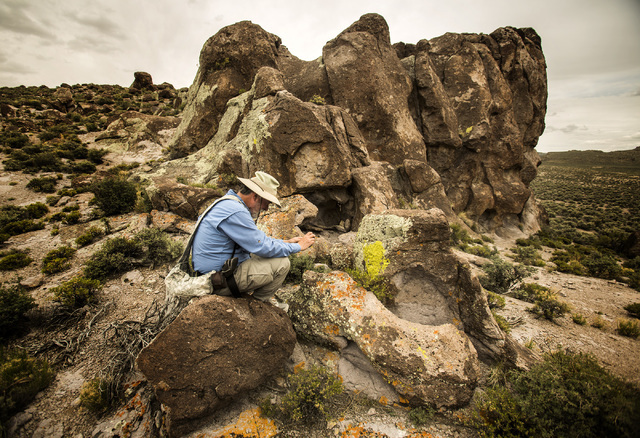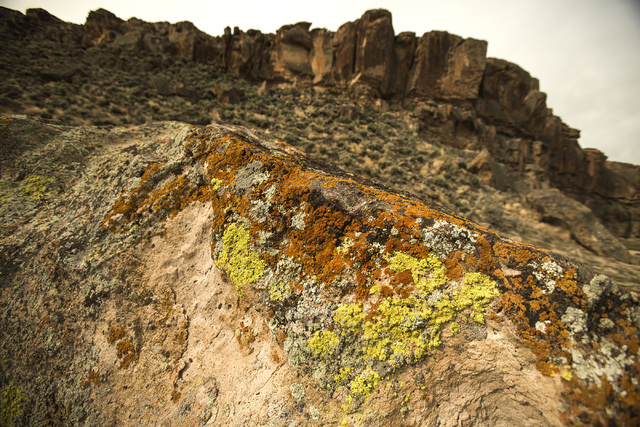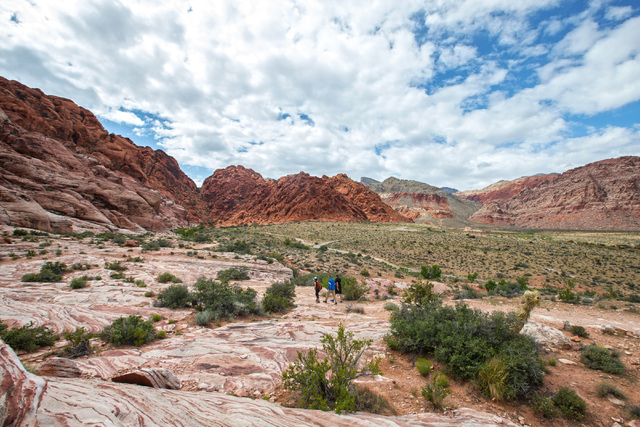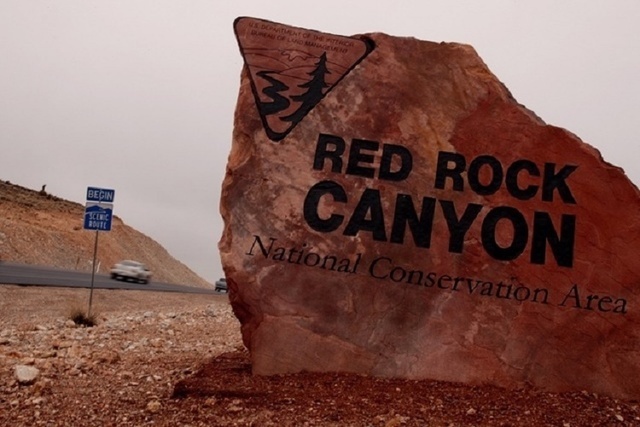Past transfers of federal land to Nevada led to corruption, history suggests
CARSON CITY — Some Nevadans are pushing the federal government to transfer more public acreage to state control, but history suggests past management of these lands by those entrusted with their care was mired in corruption.
The current push for a transfer is underway because about 85 percent of Nevada is controlled by various federal agencies, primarily the U.S. Bureau of Land Management, according to the Nevada Legislature.
But if Nevada officials failed before, what guarantee is there that it won’t happen again?
The late Republican Gov. Charles Russell, in an oral history recorded in 1965-66, strongly criticized Nevada’s management of the lands the state received from the federal government when it became a state in 1864.
The sections of land were given to the state to finance public schools. The state subsequently persuaded Congress to instead give it 2 million acres of more desirable lands for the public school funding effort.
Russell, governor from 1951 to 1959, minced no words about what happened with Nevada’s state lands. Russell noted that in 1938, Nevada had about 400,000 acres of land to administer. By 1951 when he took office, that number had been reduced to 8,000 acres.
“A number of state officials became very wealthy on the land that they accumulated,” Russell said. “This, to me, is one of the low points in Nevada history, because the land had been given to the state of Nevada as having a land-grant college, and much of this land went for a very minimum.
“And such people as Red McLeod and other state officials (this is easily a matter of record) had obtained these large acreages, especially in Clark County, which made them wealthy people,” Russell said.
Wayne McLeod was state surveyor general from 1939 to 1951. He died in Reno in 1964.
Today there are 2,914 acres of school trust lands remaining in Nevada.
FUTURE PROBLEMS FEARED
Critics question whether the same type of problems could arise with any new federal land transfer.
Rep. Mark Amodei, R-Nev., said last week that he expects a hearing this year on his Nevada lands bill, House Resolution 1484, which would transfer about 7 million acres of federal land to the state.
While a hearing is expected, action on the measure is less likely, although components of his bill are contained in other measures that could see approval by Congress this year, he said.
One example is the Pershing County lands bill introduced in June by U.S. Sens. Harry Reid, D-Nev., and Dean Heller, R-Nev.
Asked about Nevada’s troubled history of managing its state lands, Amodei said there needs to be accountability and transparency in any transfer of lands to the state. But there is more oversight of such actions in the 21st century compared to what happened decades ago, he said.
A transfer approved at the 2015 state legislative session to provide additional land to a copper mine project in Yerington, for example, required payment for the land at fair market value, Amodei said.
“This bill is pretty transparent,” he said.
But Bob Fulkerson, the state director of the Progressive Leadership Alliance of Nevada, which opposes any such land transfer, said Amodei’s bill is not only “bad for ordinary Nevadans who love our wild and open spaces, but it’s a giftwrapped package to private developers and other wealthy interests yearning to make a quick buck by closing off our lands.”
“Gov. Russell’s prescient statement shows our state’s history in managing public land transfers is rooted in corruption at worst, ineptitude at best,” he said.
The alliance is an umbrella advocacy organization representing more than 30 liberal-leaning groups in Nevada.
Despite the uphill chance for passage, Amodei said he wants a hearing on the legislation to continue to build momentum for a transfer of lands to Nevada’s control.
REVENUE OPPORTUNITY SEEN
Supporters of the idea, which also passed the Nevada Legislature in 2015 in Senate Joint Resolution 1, argue that the state could bring in revenue by leasing transferred lands for grazing and mineral rights. The measure passed on a party-line vote with Republicans in favor.
Several Nevada elected officials, including Gov. Brian Sandoval, also support such a transfer.
Opponents have expressed concerns that any such transfer would ultimately close off more acreage to access by Nevada residents as the land was sold to private interests. There is also the question of whether the state could afford to manage such lands if there were a fire, for example.
Officials in other Western states, notably Utah, Montana and Idaho, also are seeking transfers of public lands to state control.
The transfer of the public lands as proposed in SJR1 include lands in the original railroad corridor across Northern Nevada, called checkerboard lands, and lands already identified for disposal by federal agencies, among other acreage that would total 7.3 million acres or about 10 percent of the public lands total in a first phase.
Amodei said much of the acreage in his bill involves these checkerboard lands, where alternating ownership by private interests and public agencies make it difficult to manage the acreage. It also involves land already designated for disposal by the federal government.
Checkerboard lands in Nevada run along the original Central Pacific railroad right of way. They are difficult to manage because of the alternating ownership. Amodei said a transfer would allow consolidation to make it easier for ranchers, for example, to run their operations more efficiently.
Amodei said his bill has undergone revisions to ensure that existing public access to the lands is protected.
SJR1 was requested by several Republican state lawmakers as a follow-up to a 2014 study on the viability of the state taking over some of the millions of acres of land in Nevada that is now under federal control.
A study by the Nevada Land Management Task Force, established by the 2013 Legislature to review the issue, in 2014 produced a report arguing that the state would benefit from such a transfer because of economic development opportunities.
OTHER SCANDALS
Russell wasn’t the only one to express concern about management of the state lands, a scandal that carried on during his administration as well.
In Christopher J. Walker’s “The History of School Trust Lands in Nevada: The No Child Left Behind Act of 1864,” published in 2006, he cites a 1956 grand jury of Ormsby County investigation that discovered improprieties in the sale of the lands. Ormsby County later became the state’s only consolidated city-county, and was renamed Carson City.
The grand jury report alleged that state lands had been sold to favored legislators, other public officials and their friends and relatives, Walker wrote. Most of the land sales took place in the Las Vegas area, where lands were sold at a fixed price of $1.25 an acre despite being worth much more.
The buyers then turned around and sold the land, making big profits.
There were no indictments because the paperwork that would make such a case could not be located, Walker said in his book. The grand jury report nevertheless named and censured several individuals. Those comments were removed, however, as a result of a Nevada Supreme Court decision challenging their inclusion in the report.
The problems with the management of state lands did lead to the abolishment of the state surveyor position and the creation of the Department of Conservation and Natural Resources, which oversaw the state’s public lands, in 1957. The Legislature also passed a law requiring such lands in the future to be sold at public auction or through sealed bid.
Contact Sean Whaley at swhaley@reviewjournal.com or 775-461-3820. Find @seanw801 on Twitter.



